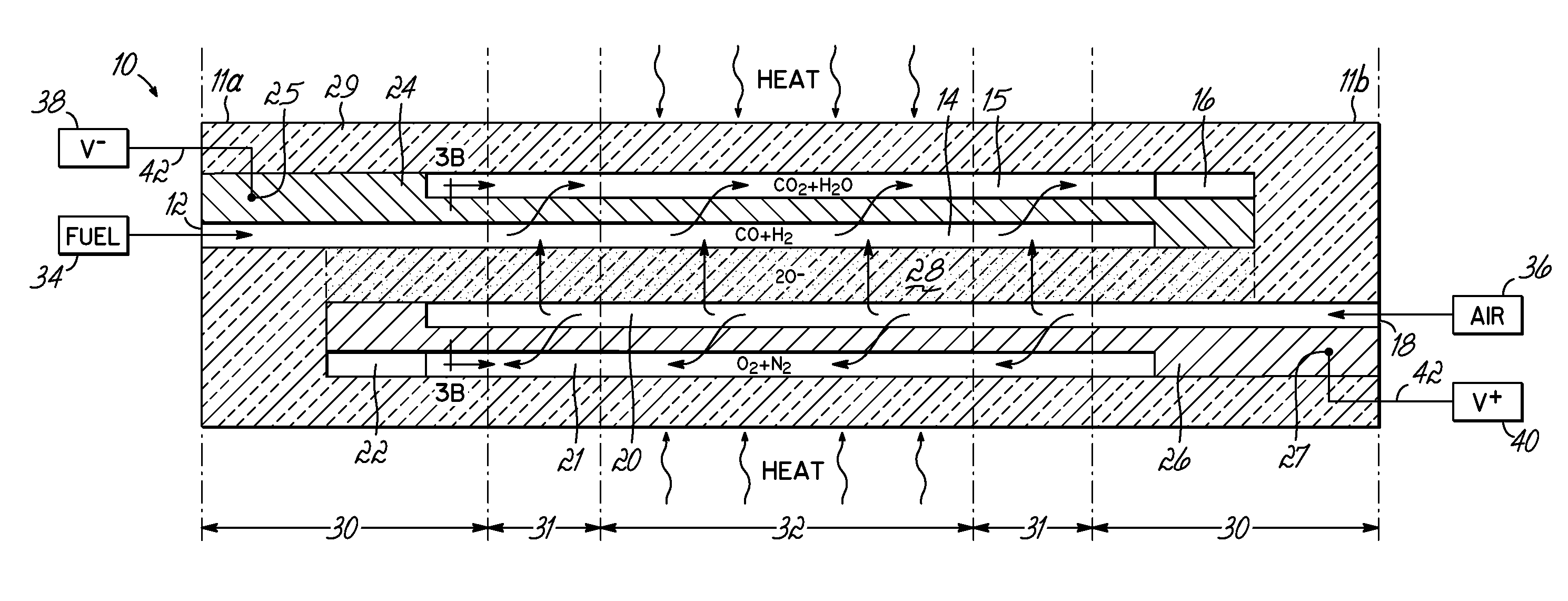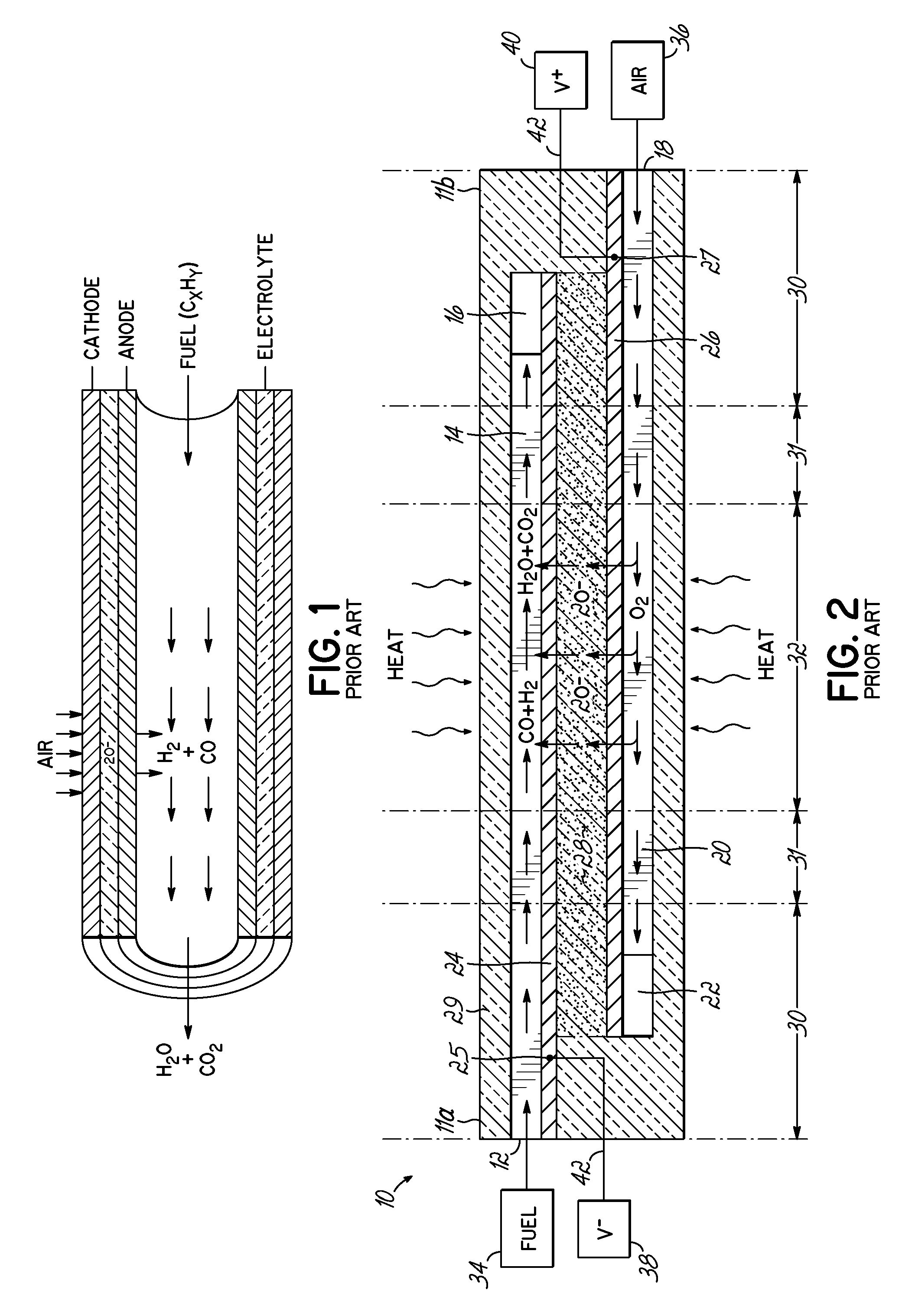Fuel cell device
a fuel cell and fuel cell technology, applied in the field of solid oxide fuel cell devices, can solve the problems of reduced air, reduced driving potential of the cell, and limited scalability of the sofc tube,
- Summary
- Abstract
- Description
- Claims
- Application Information
AI Technical Summary
Benefits of technology
Problems solved by technology
Method used
Image
Examples
Embodiment Construction
[0042]One embodiment of the invention is directed to fuel cell structure for forcing reactant gas through a porous anode or cathode, in order to make use of the fresh reactants, while flushing out the waste products. To that end, the fuel cell design separates the gas input paths to the pores from the waste output paths from the pores. Without wishing to be bound by theory, it is believed that the presence of the waste products on the fuel side (H2O, CO2) reduces the potential (the voltage that is across the electrolyte) of the cell, so that better removal of CO2 and H2O will give higher voltages and corresponding higher outputs.
[0043]Reference may be made to the following publications by the same inventors, which describe various embodiments of a multilayer Fuel Cell Stick™ device 10 (et al.), the contents of which are incorporated herein by reference: U.S. Patent Application Publication Nos. 2007 / 0104991, 2007 / 0105003, 2007 / 0111065, 2007 / 0105012, 2008 / 0171237, 2007 / 0264542 and 200...
PUM
| Property | Measurement | Unit |
|---|---|---|
| thickness | aaaaa | aaaaa |
| thickness | aaaaa | aaaaa |
| thickness | aaaaa | aaaaa |
Abstract
Description
Claims
Application Information
 Login to View More
Login to View More - R&D
- Intellectual Property
- Life Sciences
- Materials
- Tech Scout
- Unparalleled Data Quality
- Higher Quality Content
- 60% Fewer Hallucinations
Browse by: Latest US Patents, China's latest patents, Technical Efficacy Thesaurus, Application Domain, Technology Topic, Popular Technical Reports.
© 2025 PatSnap. All rights reserved.Legal|Privacy policy|Modern Slavery Act Transparency Statement|Sitemap|About US| Contact US: help@patsnap.com



